Advantages and disadvantages of connecting steel pipes with threads
The technology for connecting steel pipes with threads may seem outdated or even primitive.Especially against the backdrop of the emergence of new joining methods, such as threadless coupling connections of the “GEBO” type.
However, the threaded connection technology has been and remains the main one in situations where welding is not possible and a pipeline line needs to be quickly assembled with only a limited set of parts and tools on hand.
The content of the article:
General information
The use of threads turned out to be very convenient for connecting two cylindrical elements. It is clear that a threaded connection is used only if the pipe walls are thick. Otherwise, the profile of the thread, rolled or cut on the surface of the joined area, can weaken the metal.
To connect the elements of the highway, conical and cylindrical threads can be used. The first is used mainly in mechanical engineering equipment, the second is used for joining water and gas pipes.
Connection diagrams for pipeline sections:
- Classic bolt-nut scheme. One of the connected sections must have an internal thread, the second - external thread knurling or slicing. Most often, in this case, either pipes of different diameters are joined (but then the wall thickness must be at least 6 mm), or a thick-walled coupling is welded at the end. Since one of the segments must rotate, the joint turns out to be non-separable. Therefore, it is used mainly in closed areas of water pipelines and household gas supplies.
- Diagram using additional parts. Between the ends of the steel pipes, intermediate elements with internal and external threads are mounted and twisted along the thread. One of the connected sections can rotate, but most often the design of the connection allows the assembly to be disassembled without the need to unscrew the main pipe.
Straight sections are joined with threaded couplings, nipples and bends. If a connection at a right angle is required or it is necessary to join three or four segments at once at one point, then corners or crosses are additionally used. Essentially, these are the same couplings, but of a more complex shape, with cut internal threads.
A squeegee is a piece of pipe blank with threads cut on both sides. Moreover, the length of the threaded section for each end is different.
The coupling can be made in the form of a section of steel pipe with thick walls. There is a thread cut inside, similar to that made on the drive or on the nipple. A coupling is also called a bronze thin-walled fitting, in which right-hand and left-hand threads are cut along the inner surface from different ends, respectively.
A mandatory element of a collapsible connection is a clamping lock nut. It is screwed on to ensure tightness and strength of the connection.
Requirements for connecting elements
The diameter of steel pipes used in water pipes is determined in inches. Accordingly, the thread size for both pipe sections and couplings, bends, and nipples is also measured in inches. This approach avoids confusion when cutting threads. Dies for threaded sections of steel pipes are also marked in inches.
Certain requirements have been established for the length of the threaded section and thread parameters:
- GOST 3262-75 – for water and gas pipes;
- GOST 8969-75 – for bends used in connections of pipes of the same diameter;
- GOST 8961-75 – for locknuts;
- GOST 8955-75 – for long couplings or fittings with right-hand and left-hand threads;
- GOST 8946-75 – for pass-through angles used to turn the pipe;
- GOST 8948-75 and GOST 8951-75 – for straight tees and crosses.
The dimensions of the threaded section, its length, and the number of threads are tied to the diameter and wall thickness of the steel pipe blank. The parameters are selected so that the connection of the two pipes is reliable, while the wall of the water main is not weakened by the threaded profile, and there is always a margin of safety.
When purchasing parts for joining steel pipes, you need to pay attention to the parameters of the threaded section, the symmetry of the profile, and the same height of the vertices along the entire length of the thread.
Most parts used in connections are made from steel blanks in a semi-artisanal way using dies or cut with a cutter on a lathe. GOST requirements may not be met.
The same profile is often cut in violation of technology both on a light workpiece and on a heavy steel pipe. Despite the fact that on thin-walled workpieces the profile is not cut, but rolled. Due to defects, the connection fails within the first year of operation.
Types of detachable connections
Joining two sections of a water or gas pipe of the same diameter can be done in three ways:
- coupler with coupling and locknut;
- connecting two steel pipes with a long coupling with right and left threads;
- drive and two couplings.
The specific connection scheme for steel pipes is selected depending on the location of the intended connection, the presence of a bend, a water tap insertion, or the location where communications branch.
Joining two steel pipes using a coupling-locknut pair
This type of connection is considered accessible to everyone. The method is suitable for assembling or extending a steel water supply line from pipe blanks with threads pre-cut at the ends. It is assumed that the connected segment can rotate around the axis.
Procedure:
- Screw the locknut onto the thread of the main pipe until it stops, and wind the threaded section with FUM tape. Screw on the coupling, not reaching the lock nut 4-5 mm.
- Screw on the locknut and wind the second pipe with FUM tape.
- Align the threaded end with the entrance to the coupling, lift the pipe blank in line with the main pipe. Holding it with a pipe wrench, screw in the second part along the internal thread. First you need to turn it by hand, then press it with a key.
After the second pipe blank fits tightly along the coupling thread, tighten the locknuts and clamp the sealing material.
In this way, valves are installed and triangles are cut in to branch the water main.
Long coupling connection
Often, during the process of repairing or assembling a water pipeline, it is not possible to rotate at least one of the halves being joined. In the best case, you can move it along the axis or bend one of the pipes to the side by 10-20 mm.
In such a situation, the connection is made using a long coupling, version “2” in accordance with GOST-8955-75. The part has right-hand and left-hand threads at the inlet and outlet. The length of each section is small, for example, for an inch section it does not exceed 16 mm.
A long coupling is convenient for connecting steel pipes after repairs, for example, a tee or tap had to be thrown out of a water supply line. Only two threaded pipe halves remained.
To make the connection, you need to clean the threads from the old winding. There should be no dents or corrosion on it. Point damage to the threads is allowed on no more than 10% of the surface. A steel lock nut is screwed onto each pipe, and a foam block is wound up.
The direction of rotation of the winding when laying the FUM tape on the thread profile is different for each half. The material is wound as the housing rotates.
After laying the seal, you need to slightly spread the ends of the steel pipes along the axis by 35-45 mm. Next, insert a long coupling between them and insert the ends of the pipes inside, trying to prevent distortion. All that remains is to turn the body by hand to engage with the first turn of the thread on each side.
If the threads match, then tighten it with a pipe wrench, after which we tighten the steel lock nuts on each side.
Connection with a spigot, two couplings and a lock nut
This connection method is the simplest and at the same time the most widespread. It is interesting in that with the help of a pair of couplings and a bend of arbitrary length, you can connect two steel pipes, between the ends of which there can be a distance of 110-300 mm.
It makes no sense to use a longer steel rod. For water pipes with a cross-section of 1/2-3/4 inches, it is recommended to use 110 mm pipes, for inch pipes - 130 mm.
The only exception is the use of 300 mm long pipes to connect water radiators to heating risers.
WITHConnecting steel pipes in a similar way is possible provided that the profile quality in the threaded section is of normal quality.Usually, at old joints, the first turns of the thread suffer due to corrosion or inept handling of the tool.
If there are at least a few “healthy” turns left, you can always cut the threaded profile on a steel pipe to the required 20-25 mm. To do this, you will need at least one assistant, a good quality die with a holder, a couple of pipe wrenches, wooden blocks and wire.
One of the workers will have to secure the bars to the water supply and hold the pipe from turning with a wrench. The second is to lubricate the threaded area with lithol or “dog lard” and screw the die in until it stops. Next, turning the die at a small angle with a pipe wrench at a time, try to make at least a few turns.
Damaged turns at the end of the steel pipe must be cut off with a grinder, and the steel burrs must be knocked off with a file. Make an entrance chamfer on the new edge, otherwise it will be impossible to wrap the coupling.
The length of the run should be 5-6 mm less than the distance between the ends of the connected highways.
The connection of steel pipes itself is carried out in the following sequence:
- Place a small amount of graphite lubricant powder inside on the locknut turns (at the tip of the blade of a slotted screwdriver). While holding the locknut in a vertical position, screw the long threaded section forward. Drive the nut several times along its entire length so that the threaded profile crushes and disperses the powder evenly along the entire thread. Blow away its remains.
- In addition to the existing locknut on the long thread, tighten the coupling. The pair will need to be tightened to the end of the section, but not tightened. From the opposite end of the drive with a short threaded section, screw in the second coupling, but with the threaded profile wound with FUM tape.
- At the connecting ends of the water supply, wrap both threaded sections with a rubber tape. At either end of the line, a coupling with a squeegee is screwed on, which is on a short thread. Tighten the connection with a pipe wrench.
- Drive the coupling from the long threaded section of the run onto the wound thread. At this moment, secure the drive and keep it from turning with a pipe wrench.
The connection is completed and the quality of the work can be assessed. If there are no complaints about distortions, tightness or remaining threads in the areas being connected, wind the impregnated tow between the end of the coupling and the locknut and tighten the latter until it stops.
After checking, treat the joint with an anti-corrosion solution and, after drying, paint it with pentaphthalic enamel.
Advantages and disadvantages of threaded connections
A properly assembled unit can last 25-30 years without repair. The drive, coupling, and lock nut are inexpensive and easy to manufacture even in home-made conditions.
If necessary, you can always disassemble the connection, replace the damaged element, and wind the sealing tape. After which the unit will serve as long as the pipeline itself.
The threaded connection has two disadvantages:
- assembly requires certain skills in handling connection parts;
- durability depends on the quality of the cut thread.
Any deviations of the profile from coaxiality with the workpiece, crushing of the metal, or too long a threaded section on the bend cause the appearance of rust and through corrosion of the walls. Even anti-corrosion treatment does not save.
The connection of steel pipes with threads today remains the main one when assembling water pipes or gas mains. There is nothing to replace them today. Compression or crimp connection schemes last a maximum of ten years, until traces of metal corrosion appear on the surface, or the rubber gasket hardens and finally loses its elasticity.
Have you ever connected sections of a main line using threads? Share your experience with readers in the comments. Save the article to your bookmarks. Repost on social networks.
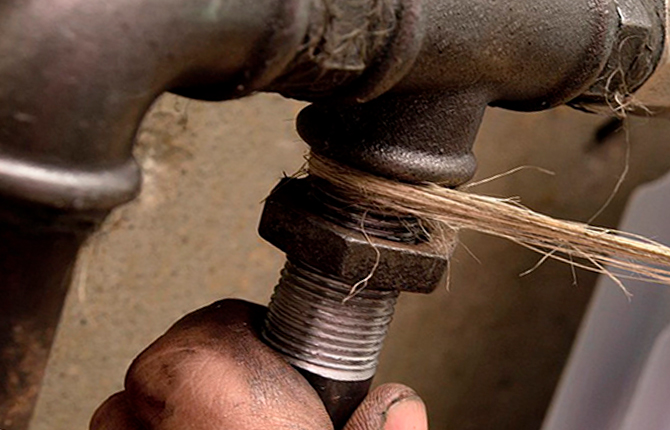
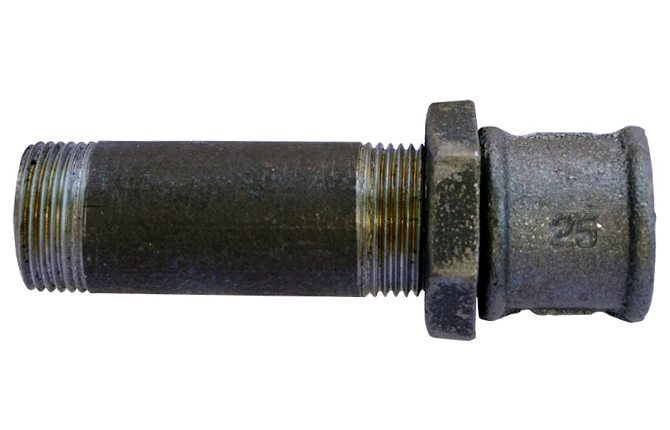
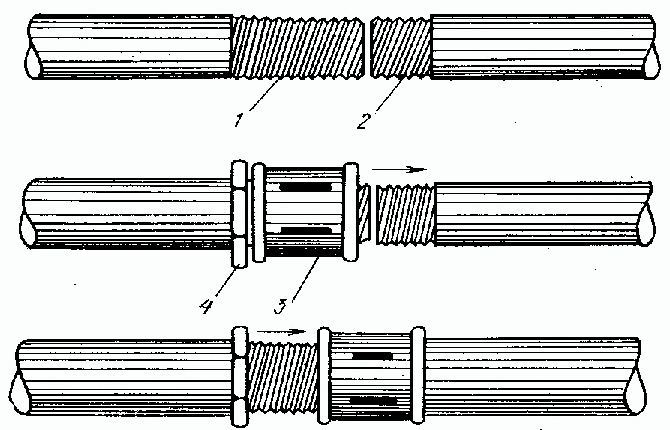
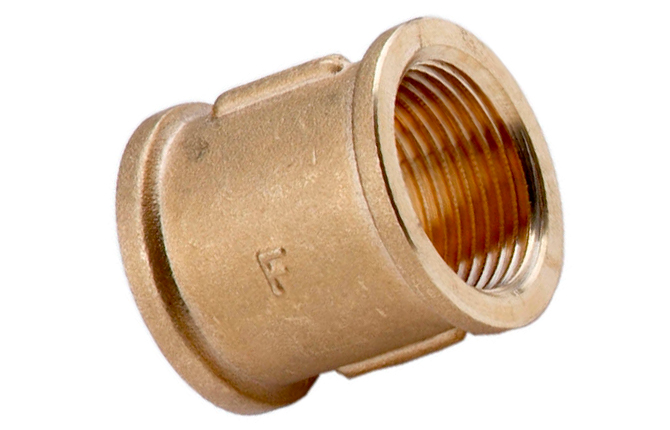
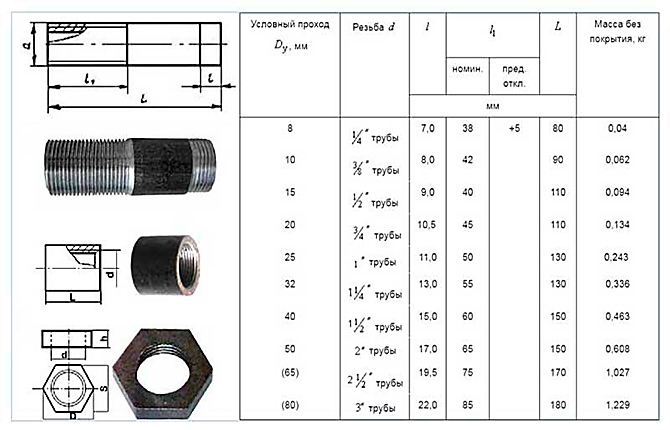
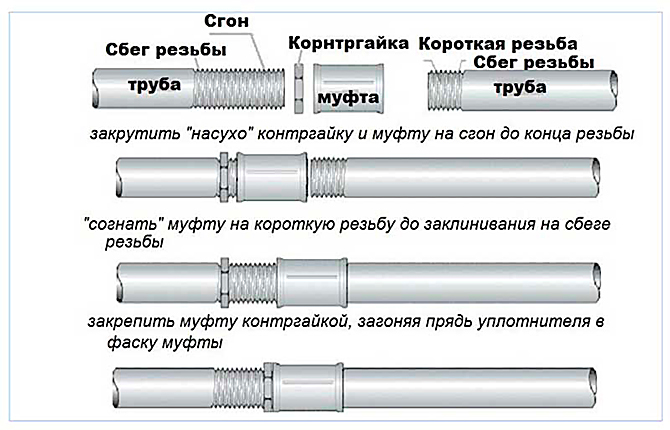
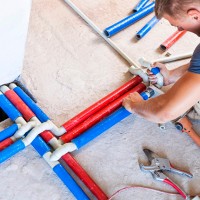




Yes, this is all nonsense. It turns out to be much more reliable than these newfangled nuts with crimping rubber bands, but the durability of the connection depends on the quality of the steel. They will bring Chinese pipes with sulfur, cut them into pipes, and they will rot within a couple of years even in the house, not to mention the water supply in the country house or in the basement. Old pipes last for 30 years, and new joints rot.
You are wrong, it is not the quality of the steel that is to blame, but the crooked hands of the turner. You go to the market, and there, out of ten frames, only a couple are made more or less without cuts in the wall. And a neighbor can unwind the electric meter through a water pipe, then the steel connections rot into dust, and nothing can be done.
I don’t know, I’ve always installed threaded drives for myself and my neighbors, no problems. Sometimes the joint sweats, but it’s not a big deal, you can tighten it with a wrench.If the drive-coupling system, even if it’s old, was invented 50-60 years ago, and still serves well, why come up with new connections, which are of no use, only the advertising is confusing.